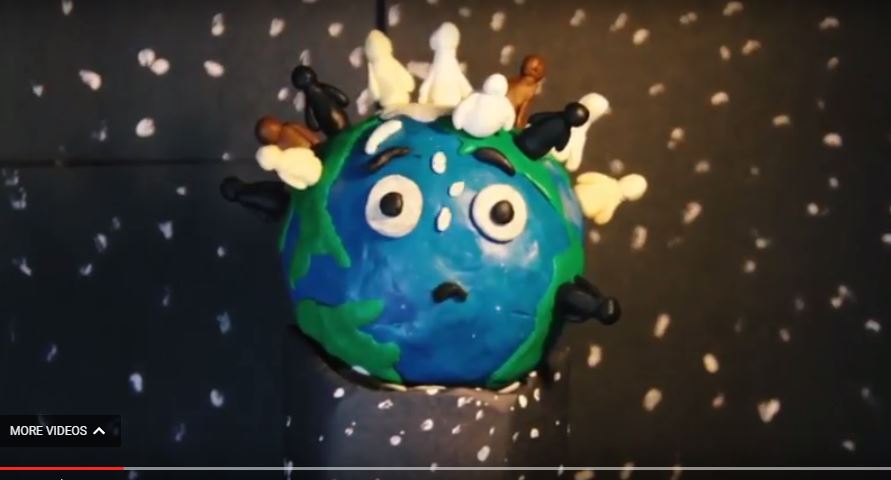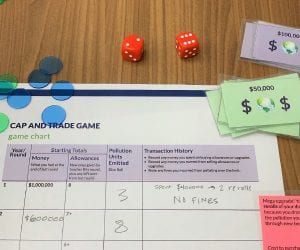Today’s middle and high schools students will grapple with the effects of a changing climate for the rest of their lives. Even if all greenhouse gas emissions stopped today, the momentum of built-up CO2 in the atmosphere means temperatures would continue to increase, sea level would continue to rise, and weather patterns would continue to shift.
Student filmmakers understand that the challenge of climate change isn’t going away and created videos exploring the issue and offering short and long-term solutions. The six videos were created as a part of the World of 7 Billion video contest.
Meat Eaters and Climate Change
Feeding 7.5 billion people is a process that consumes a lot of energy. And as population increases and there are more mouths to feed, food production will need to increase to meet the demand. Douah Shakshuki’s video, “Combat Climate Change Starting with the Food We Eat,” states that 18% of greenhouse gases come from livestock production and implores viewers to reduce their meat consumption. Recognizing how far food travels from farm to table, she recommends choosing locally grown food in order to cut down even further on energy going into your daily meals.
Reducing Our CO2 Footprint
A common theme throughout the videos was the idea that more people need more stuff – whether that be cars, electricity to light our homes, or heavily-produced consumer goods. Fossil fuels are heavily relied on to provide these products, but these students think that should change. Arnav Madhiwalla and Pramana Saldin stress the benefits of renewable energy sources like wind, solar, and hydro. Carrie Hu thinks industries should use a process of carbon capture to limit their impact on the atmosphere. And the students all agree that in the short-term, individual choices can make an impact – drive less and walk more; plant trees; turn off the lights.
Green Infrastructure – A Fix for Urban Pollution?
Over half of the world’s people live in urban areas and to accommodate all these people, current cities are expanding and new ones are frequently created. Ethan Taylor calls these growing cities “epicenters for heat and air pollution” but has a solution to fight the problem – green infrastructure. In his video “Combating Climate Change,” Ethan argues that creating green spaces such as parks and roof gardens, and implementing strategies like walkway plants, can not only reduce temperatures but also decrease the amount of greenhouse gas in the atmosphere. Vacant lots, empty roofs, and unused lands can be transformed with green infrastructure and have benefits reaching beyond city limits.
The Top 6 Videos Linking Population to Climate Change
- Combat Climate Change, Starting with the Food We Eat by Douah Shakshuki
- Combating Climate Change, by Ethan Taylor, Jeffery Whitmire, and Gavin Meeker
- Our Planet by Arnav Madhiwalla and class
- Rising Sea Levels by Kate Wright
- Rising Seas by Carrie Hu and Julia Henry
- We Only Have One Planet by Pramana Saldin, Nick Burriarelli, Riju Dey, and Adit Gupta





